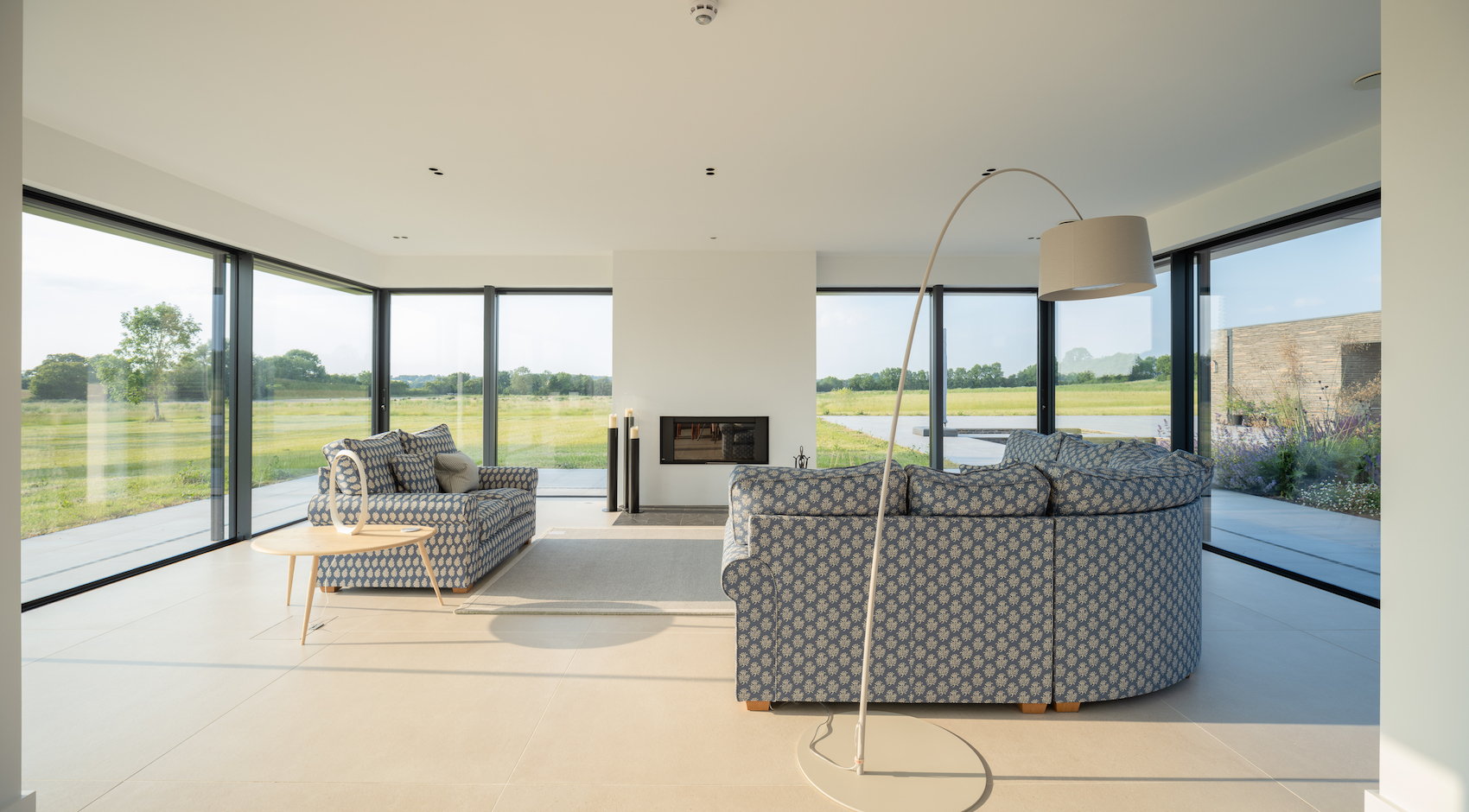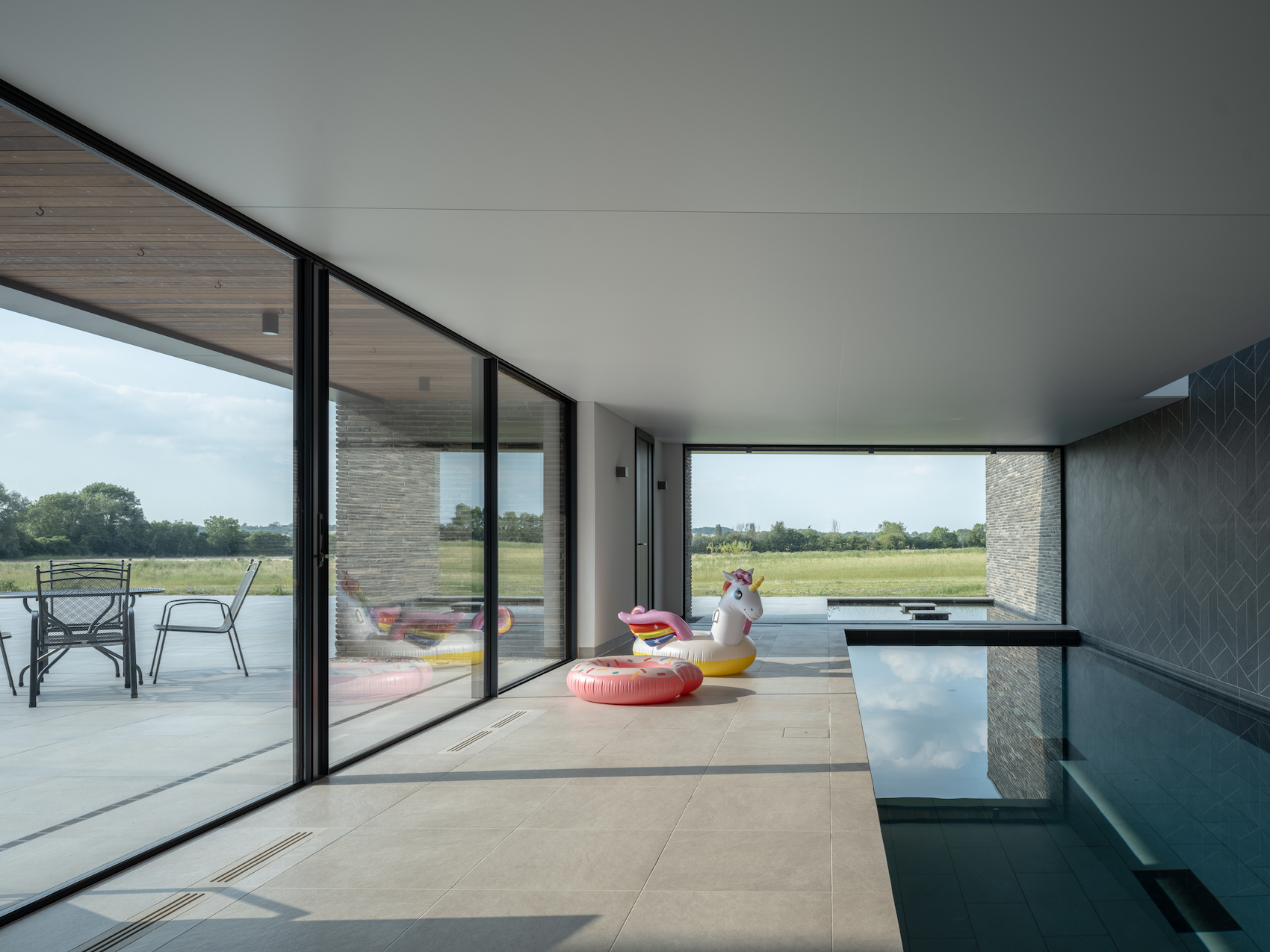NP Architects’ high-quality, environmentally-conscious house in South Cambridgeshire forms a strong connection with its rural site.
Designed by NP Architects, Armshold Farm replaces a nondescript 19th-century farmhouse and dilapidated outbuildings and sheds on a registered light airfield in South Cambridgeshire. The brief was for a high-quality, low-maintenance modern replacement dwelling with a timeless aesthetic. The design comprises two distinct elements: the main house and an ancillary wing. Inspired by the minimalist aesthetic of traditional barns, the primary structure is a two-storey linear building with a pitched roof. Large chimney stacks at each gable enhance its elemental simplicity, while carefully placed openings and balconies mirror the internal layout. Clad in large-format clay tiles, the steeply pitched roof extends to the first floor, creating a unified façade that merges roof and walls without eaves.
Clay, a material that is historically linked to nearby Claypit Hill, was selected to emphasise the building’s connection to the land. The ground floor incorporates linear Roman-style brickwork and substantial chimney stacks, creating a tactile dialogue with the clay tiles used on the upper floor. Subtle variations within the simple material palette achieve a delicate balance between texture and uniformity.
Inside, the main house is organised around an open-plan ground floor, combining kitchen, dining and living spaces, while bedrooms occupy the upper level. The master bedroom has a northwest-facing balcony, providing an elevated perspective over the grass airstrip and open fields.
Forming a courtyard to the east, the single-storey ancillary wing accommodates a range of amenities, including garages, a gym, home office, and indoor swimming pool. The structure is partially embedded into the hillside, allowing it to blend discreetly into the landscape while also providing sheltered outdoor space. Extensive glazing link the living spaces to the courtyard and beyond, framing panoramic views of the surrounding countryside.
Driven in part by the client’s expertise in electrical engineering, the home had to be sustainable and high performing. A suite of passive and active technologies are utilised, including ground source heat pumps, mechanical ventilation with heat recovery, and a photovoltaic array. The building envelope achieves U-values as low as 0.12 W/m²K, significantly reducing energy demand.
Particular attention was given to the energy requirements of the 25-metre swimming pool. Two GSHP systems – incorporating a 100-metre ground loop – heat buffer tanks that supply the house and pool’s air handling system. This prioritises air heating over water heating, with recovered energy recycled via a heat exchanger. The 9kWp photovoltaic system further supplements the energy supply, achieving an annual energy consumption of just 42.2 kWh/m²/year for both the house and pool.
Water sustainability is addressed through a rainwater harvesting system and innovative methods for recycling waste pool water. Utilising activated filter media (AFM) to eliminate bacteria without chlorine, pool wastewater is repurposed for grey uses, such as car washing, irrigation and toilet flushing. A 7,500-litre rainwater tank positioned at the front of the house provides additional resources for outdoor taps and sanitary fittings.
In keeping with the sustainable aims of the project, all existing hardstanding materials on the site were crushed and reused as sub-base for the new buildings, minimising waste and reducing the need for imported materials.




































